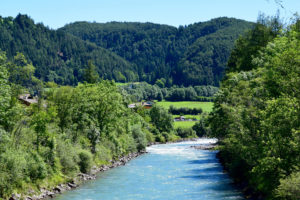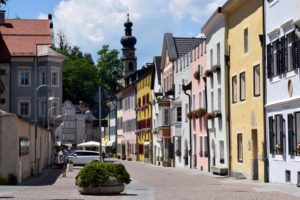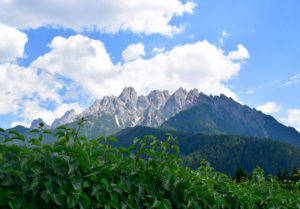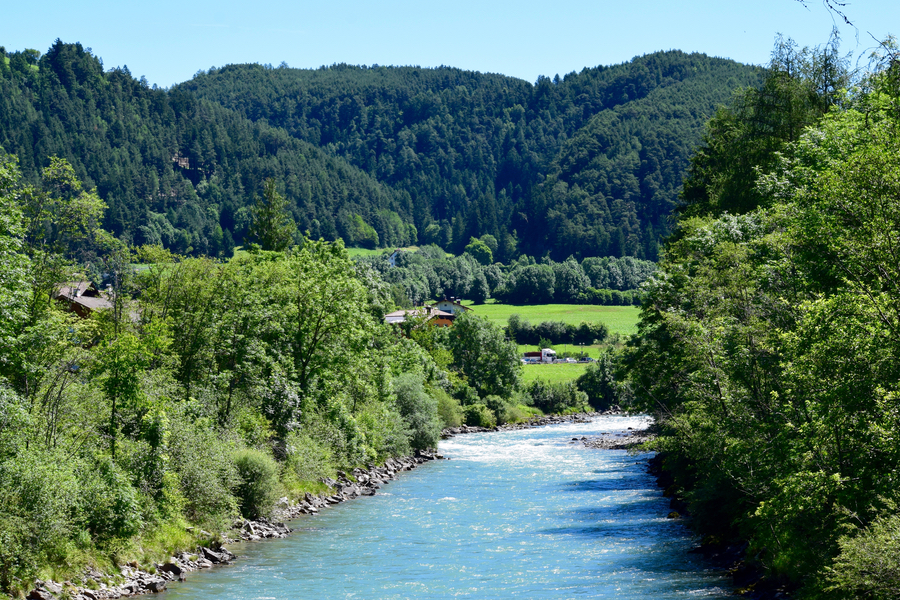Heaven on Earth
Last Winter we discovered through a German friend the fantastic Falkesteiner Resorts. A chain of hotels dedicated to holidays for families, where they cater with special facilities to children, as well as adults. Our first experience was in the little ski town of Katcshbercg in Austria. We were very pleased with the price, the service, and amazed with the amenities. For this Summer vacation we picked the one in Casteldarne, located in the town of Chienes, in South Tyrol, Italy. From the photos we expected not more than poolside relaxation, and perhaps having couple time while the girls were at the children’s play area where they do many outdoor activities. But little did we know this gem was going to have many outdoor activities for us to discover as we learned the historical facts of this mesmerizing area.
South Tyrol known by its Italian name Alto Adige, and officially called the Autonomous province of Bolzano, is located in northern Italy, bordering Austria (North), and Switzerland to the West. It is one of the two autonomous provinces that make up the autonomous region of Trentino-Alto Adige/Südtirol. The province is granted a considerable level of self-government, consisting of a large range of exclusive legislative and executive powers and a fiscal regime that allows the province to retain a large part of most levied taxes, while nevertheless it is a net contributor to the national budget. South Tyrol is the wealthiest region in Italy thanks to its astonishing landscape, the stunning town-hopping by train, and the hybrid cultural heritage which attracts tourism all year round.
From my perception and my knowledge, it seems like the perfect mix of German and Italian traditions. From 62% German language to delicious pasta, I can say it is an exquisite blend. This province has the best of both worlds, the Alpine and Mediterranean lifestyle, as well as culture and traditions that develop into a feast of delicious gastronomical experiences… diversity of cheese, sausages, wine, beer, honey, bread, and so much variety of crisp fruit.
From Doha we took Pegasus, a Turkish airline, to Munich via Istanbul. To be a budget airline, I have to say I am pleased with the comfort and overall flight experience. In Munich’s airport we took the train to the center of the city where we usually stay, a few blocks from Marienplatz. We spent a day walking the area, and the next day we took a 3.5 hour train to Fortezza, Italy. From here we got on the local train of South Tyrol for 15 minutes which took us to Chienes/Kienes, where the famous Castledarne is located. It was satisfying after all this hopping on and off of trains with bag packs, stroller, baby, and a tired Gaia, to walk a few steps to our home away from home: Falkesteiner Resort in Casteldarne.
If traveling with children, and especially with babies, I highly recommend this one, as this resort is equipped with an outdoor and indoor play area; there is a baby room available for soft play, and a nanny to take care of the babies from 4:00-8:00 pm (without extra charge), this was our big highlight so that we could have some couple time to enjoy a quiet “romantic” dinner. The floors are coded in colors and the rooms with animals so that the children can identify their personal space. The bike rental has chairs for children and babies, as well as bicycle trailers, and children’s bikes. The hotel package also includes a seven-day pass on the local train. This allowed us to visit Brunico and Dobbiaco, two little towns very close to us. However, there was still so many more to see!
There are endless possibilities for outdoor activities and town hopping in South Tyrol, so much to see, and a million little towns to visit with their own special quaint characteristics from walking the charming and calm streets, admiring architecture details of cathedrals, enjoying a coffee or local brewed beer with a summer breeze, and visiting interesting museums of history or natural resources that are a gem to the area.
During this week we visited three towns: Casteldarne, Brunico, and Dobiacco. Here are a few notes about how this delicate environment altered my senses, taught me about a hybrid culture, and how we made the best of our experience traveling with a child and a baby.
Our wake-up calls around the world have gone from urban roosters in Vietnam with the morning market smell, to a powerful Muslim prayer in the Middle East, and now the tender orchestra of the Italian Alps.
CASTELDARNE
A few steps from the train, our home away from home, the Hotel Falkensteiner, which opened its doors in 1957, spotted us a room with panoramic view of the famous castle over mountains, a historical Catholic church, and a lake. Shades of green under a perfect blue sky became the permanent canvas over our week stay. The crisp morning breeze, the sound of a small creek, and the church bells wake us up in this Italian Heaven. Our first two days the excitement got us biking about 20 kilometres watching the Italian Alps, the many little houses, a clear and robust river, and farmers caring for this precious land. 
Founded in 1928 to the west of the village of castledarne-Italy dating back to 201 AD, which actually indicates the distance from Aguntum, a roman town close to the modern city of Lienz-Austria. Morning walks took us through a Roman path (circa 200 AD), looking for fairies in this enchanted forest, picking baby strawberries, smelling the trees, feeling the cold water coming down from the alps through a precious little creek, peeking at possible knome’s houses, and a baby’s nap.
BRUNICO
The largest town in the Puster Valley. It was our fist choice since it is only 10 minutes away from Casteldarne. Most of the employees in the hotel live in this town. It is decorated with small-quaint restaurants and tourists. The highlight was a huge library in the middle of this municipality, next to The Free University of Bozen-Bolzano, which brings many students to the community who can also supply the demand of tourism. A bitter-sweet sight were all the Catholic churches and cathedrals, the icons of a religion which I grew up following but one which I no longer identify with. Nonetheless, my perspective was geared towards appreciating how believes are expressed and communicated through art, which molds cultural views and appreciation. We stopped to eat a slice of pizza at this “popular” little place, but the pizza was not the actual Italian pizza I was envisioning. It was more a German-style of thick dough. So there you go! I had to remember that I am not exactly IN Italy, I am in South Tyrol. I read somewhere that it is more fulfilling to have acceptance than expectations.

DOBBIACO
We visited this town a day before leaving Casteldarne because it was a bit farther, it is about 70 kms northeast of Bolzano city. It is considered the “gate to the Dolomites” -the mountain range that forms part of the Limestone Alps and extends from the River Adige in the West to the Piave Valley in the East. It has two popular lakes to explore, the Dobbiaco and Landro, more info here. Due to its closeness to the Italian Alps, it makes it a popular destination for all the ski aficionados. We spent a few hours walking, eating ice-cream in a cozy family owned restaurant, while we enjoyed a stunning view of the Alps (photo below). We visited local hand-made stores, and finished viewing the Church of Dobbiaco-Toblach, an exquisite Baroque structure with Roman foundations and Gothic influences dated back to 1804. Here is a link from Tripadvisor of the most popular 10 things to do in Dobbiaco.

South Tyrol is definitely a bucket-list location, especially if outdoors and simplicity is in your plans, and for children who are often confined to urban areas, it is absolutely a fantastic experience. The accessibility by train with bikes really makes the visits to the many towns possible, and each of these has so much to offer… we just needed more time.

